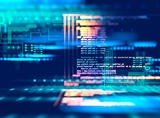
Blockchain unchained: one lawyer’s quest to figure out what the hell everyone is talking about
Blockchain unchained: one lawyer’s quest to figure out what the hell everyone is talking about
Authored By
Practices

You’ve heard of blockchain. So have I. We are told it will revolutionize the world, or at least the financial and insurance industries. Only one problem: I have no idea what blockchain is. Really, I have no clue. Maybe you do, in which case you should stop reading immediately and spend the next five minutes on wired.com instead.
Because I know nothing about blockchain, I figured I should write a blog post about it. This is nothing new for me. My 15-year old son routinely calls me out for babbling about subjects that I do not fully comprehend.
You are still reading. I know you are. Which means that you do not totally understand blockchain either and you are hoping that by coming on my personal blockchain journey, you might actually learn something too. So here it is.
Distributed. Ledgers. The dozen or so articles on this topic that I’ve now read all tell me that distributed ledgers are the key to blockchain. Got it? Me neither. Apparently, distributed ledgers allow new-fangled cryptocurrencies (think Bitcoin) to flourish. And, given how awesome these distributed ledgers are, they will also permit us to eventually cut all the middlemen out of the “value transactions” we make (goodbye Bank of America and PayPal).
Perfectly clear now? No? Let’s break it down. A ledger in the long-gone paper world was just a book where people wrote down a bunch of information, often related to financial transactions. When computers arrived on the scene, folks recognized it was way more convenient and efficient to keep ledgers electronically. But, even with computers, I had my electronic ledger and you had yours. You had no idea whether mine was accurate or whether I had “adjusted” a couple transactions when no one was looking. Thus the need for some sort of trusted intermediary, like a bank, to keep additional ledgers that each of us could use to verify one another’s records.
 But what if there were a way for us to determine that our ledgers (insert the word spreadsheets or databases if you prefer) were both accurate without third party verification? Or a method for us to safely and securely record transactions in the same ledger? Enter blockchain. And enter the “distributed” part of distributed ledger. The basic idea is that a ledger no longer resides on a single computer/server controlled by a single person (or entity). Instead, that ledger is distributed to the ends of the electronic earth, accessible to anyone wanting to take a look (or to anyone with appropriate permission if it is a “private” blockchain).
But what if there were a way for us to determine that our ledgers (insert the word spreadsheets or databases if you prefer) were both accurate without third party verification? Or a method for us to safely and securely record transactions in the same ledger? Enter blockchain. And enter the “distributed” part of distributed ledger. The basic idea is that a ledger no longer resides on a single computer/server controlled by a single person (or entity). Instead, that ledger is distributed to the ends of the electronic earth, accessible to anyone wanting to take a look (or to anyone with appropriate permission if it is a “private” blockchain).
That’s cool, you are probably saying, but just because Kendall’s ledger is now out there for public consumption, what gives you any comfort that it’s accurate? I mean, Kendall seems like a great guy and all, but I know he’s made a few bad line calls on me on the tennis court, so maybe he’s playing fast and loose with his electronic books. Or, maybe some delinquent from Kazakhstan has hacked into his computer and altered the figures. How can I trust what Kendall’s telling me?

Therein lies the fundamental question that blockchain seeks to answer and the problem that it hopes to solve. Blockchain takes the ledger out of my hands and puts it in the hands of an electronic community responsible for collectively keeping everything on the up and up. Think of it as an online, 21st Century neighborhood watch program. I can’t fudge my ledger because the same ledger exists in millions of other places and if I do try to fudge it, the neighbors are going to call the police. Same thing for hackers. If somebody hacks my ledger, the rest of the community is going to notice that my version no longer matches everybody else’s. And, again, the blockchain brotherhood will cry foul and the hacked version will be rejected.
How all this validation happens is still something of a mystery to me. When people try to explain it, they usually do so by talking about Bitcoin and throwing in a lot of references to “mining” and “nodes.” A node is apparently a computer, connected to the Bitcoin network, that is used to validate transactions. One node races against other nodes to validate transactions, with the first one to validate earning some Bitcoin. This validation process is supposedly called mining. Whatever. We’ll leave those details to the folks that did way better than I did on the math section of the SAT. The key point is not how the validation takes place, but that it does take place.
How about an example? Imagine a gold coin. The owner of that gold coin hopes to trade it (let’s say for a bottle of wine). When both parties are ready to make the trade, the proposed transaction is sent out to the relevant blockchain network for validation. The “validators” check the applicable distributed ledger and report back on whether the gold coin has the value the owner claims. Assuming all is as advertised, the transaction is approved. Thousands of transactions are out there for validation at any given moment, and they are compiled into “blocks” every few minutes and entered into the ledger after validation. Then, when the new owner is ready to trade that gold coin for something else, the same process takes place afresh, with the transaction sent out for validation and, assuming it passes muster, included as part of a new block. The new block gets linked to the old block(s) as part of an ever-growing “chain.” And so on and so forth, with each new transaction becoming part of another block in the chain (and thus revealing, finally, why the technology is called blockchain).
 Blockchain would still be the bomb if its only potential applications were in the financial world. But the reason blockchain is creating so much buzz is that its potential uses transcend finance. For instance, the legalized marijuana industry is already using blockchain to track the movement of plants from seed to sale, as required by law. And if the stoners have dialed in blockchain already, other more traditional industries will not be far behind.
Blockchain would still be the bomb if its only potential applications were in the financial world. But the reason blockchain is creating so much buzz is that its potential uses transcend finance. For instance, the legalized marijuana industry is already using blockchain to track the movement of plants from seed to sale, as required by law. And if the stoners have dialed in blockchain already, other more traditional industries will not be far behind.
Basically, blockchain can be used to securely keep track of any valuable information – medical records, social security information, chronology of ownership, the list goes on. IBM just announced a partnership with Nestle, Unilever and Walmart to use blockchain to trace the source of contaminated produce (apparently in mere seconds). A new cloud storage startup called Storj allows users to buy and sell unused hard drive space, relying on blockchain to ensure that only the buyer of the space can access the data stored there.
If you are wondering how this piece made it into an insurance-related blog, rest assured, the potential applications in insurance are endless. To provide just a glimpse, consider a “smart” insurance policy that is digitally set to pay policyholders once a given contractual parameter is met (a hurricane of certain intensity in a given geographical area for example).
There are other blockchain-enabled technologies arriving on the scene every day. And if my surface scratching has inspired you to dig deeper, just start checking out some of the innumerable blockchain resources out there on the internet. While I don’t have this blockchain thing totally figured out yet, I may now know enough to impress my son.
Nope – he just read this and told me I’m a total poser. You can’t win with teenagers.

